A woman who paved her way in a challenging world and found a means to express herself and give voice to her ideas and ideals through works of unquestionable, albeit unique, beauty: Afarin Sajedi.
Sajedi, the Iranian artist who places women discussing inner strength and suffering at the core of her work, will be the protagonist of the upcoming exhibition at the Dorothy Circus Gallery in Rome. Her solo exhibition will pay tribute not only to the opulence of the Renaissance but also to Rococoart. The artist, who now resides in Paris, has embraced the French atmosphere and reinterpreted the figure of Marie Antoinette in a highly personal and contemporary manner.
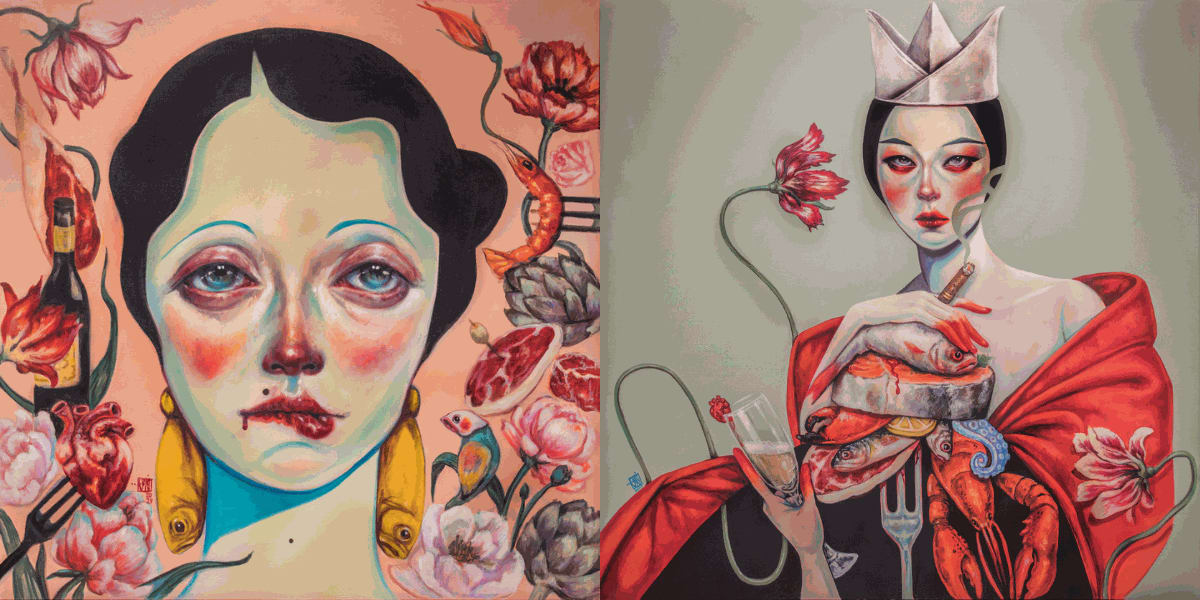
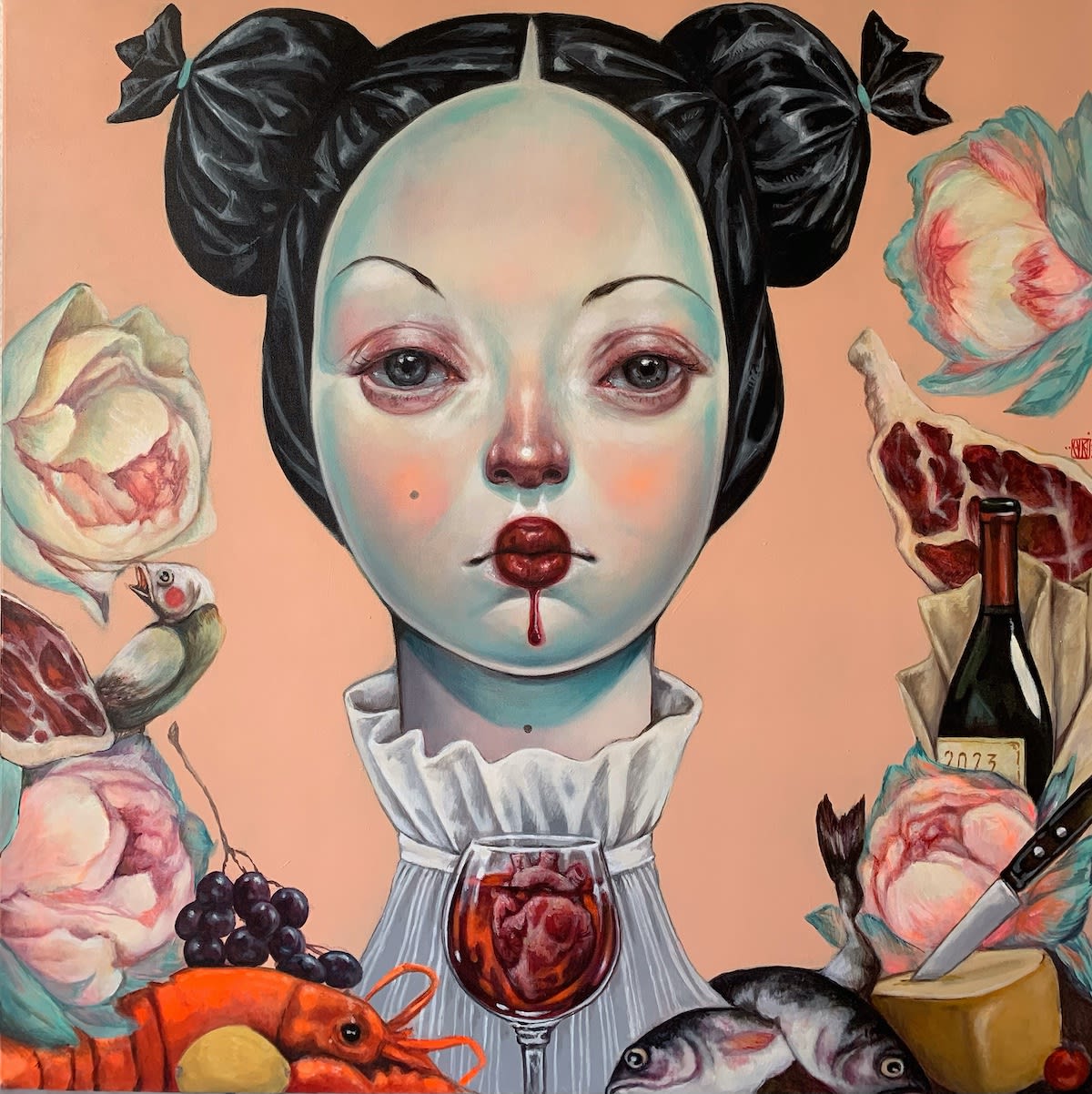
Afarin Sajedi

|
Princesse by Afarin Sajedi, 2021 & Infanta Margarita Teresa in a Pink Dress by Diego Velázquez, 1660
|

With this exhibition, through the symbolism of the heart and the ritual act of dining, Sajedi urges us to confront our desires, vulnerabilities, and appetites.
Intriguingly, Sajedi employs a unique language of symbols, where flowers, meat, and blood serve as powerful metaphors for the ephemeral nature of life. Each element acts as a poignant reminder of the fleeting essence of existence and the profound, often controversial, nature of humanity.
A distinctive feature of Sajedi's recent creations is the infusion of a rococo-inspired color palette. This choice amplifies the impact of themes related to femininity, which have always held a special place in the artist's heart. In particular, through her distinctive representation of characters dressed in elaborate and unconventional costumes, Sajedi not only celebrates their strength and resilience but also reflects her passionate temperament and cultural heritage.
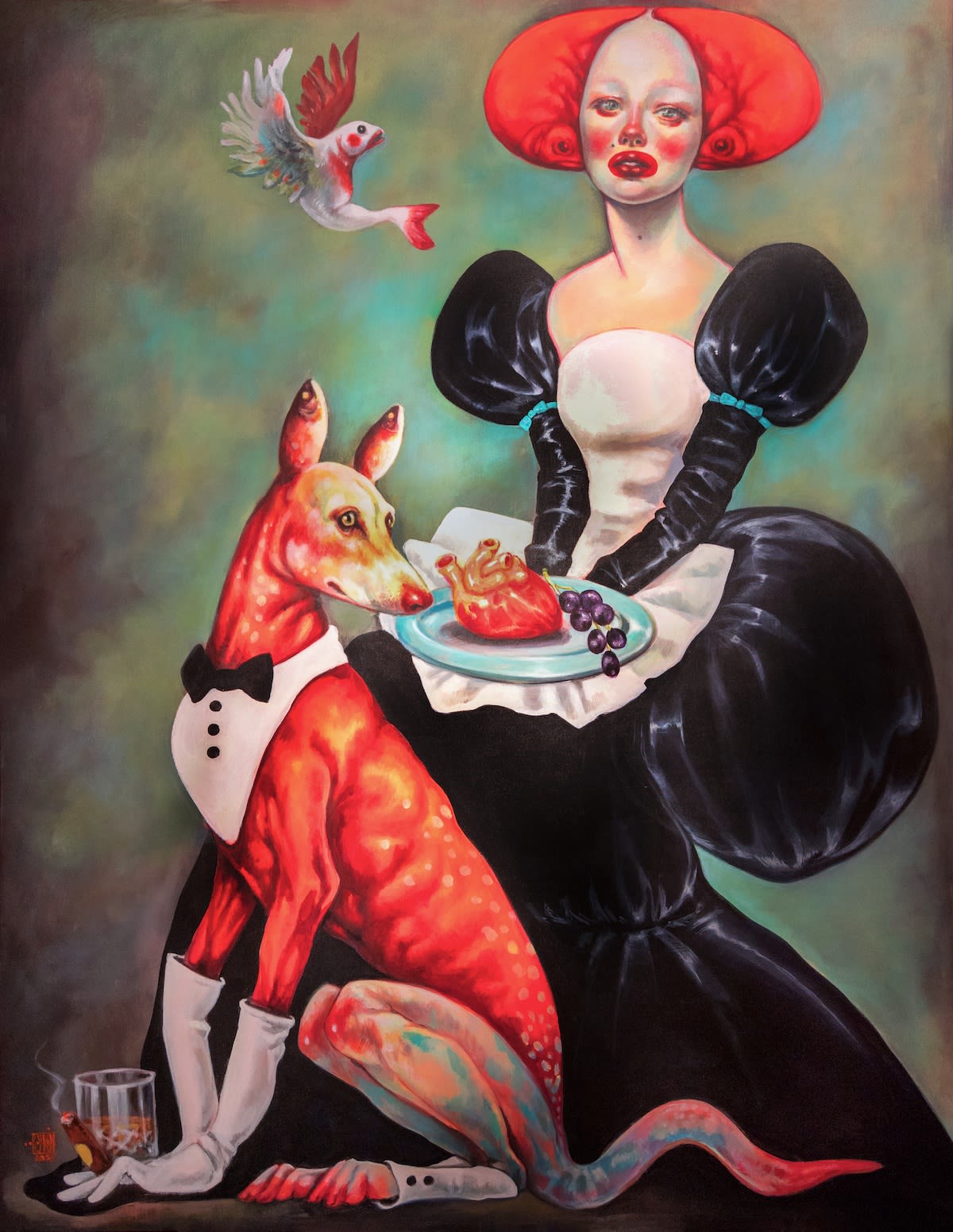
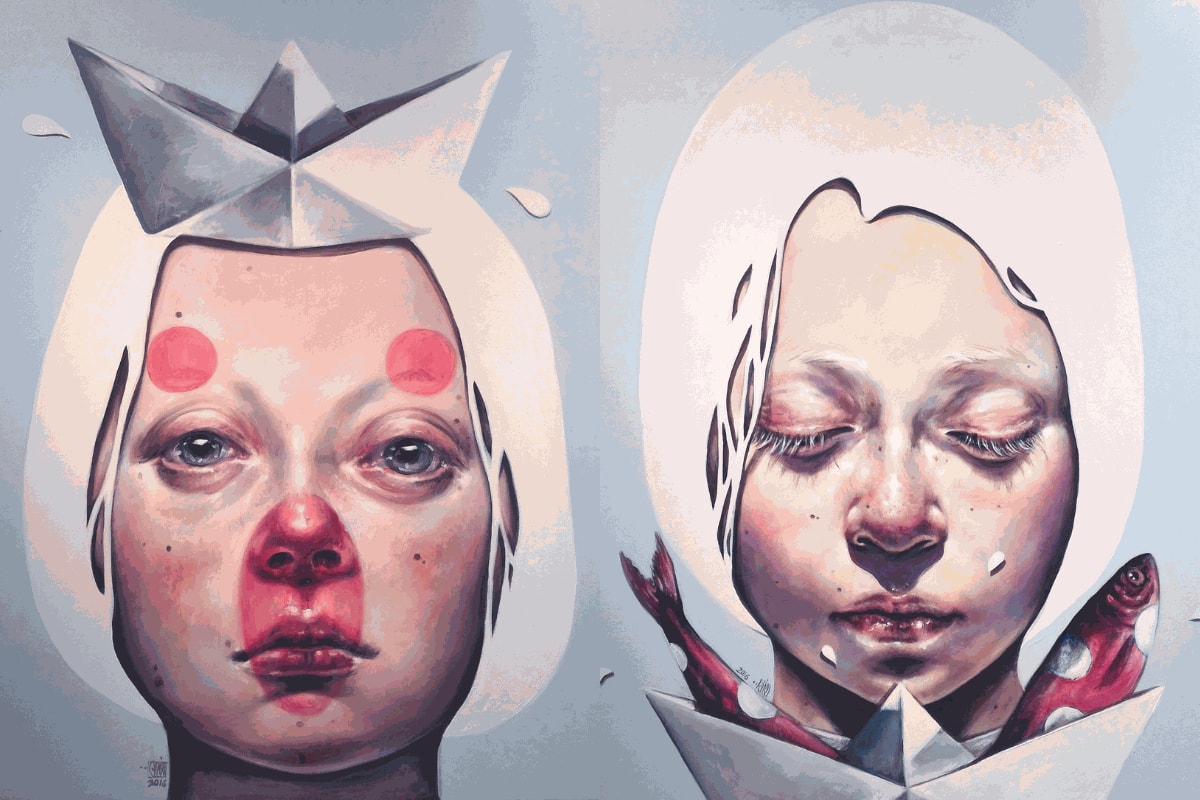
|
Illusion 1 & Illusion 2 by Afarin Sajedi, 2016
|
Sajedi received a classical painting education, and her artistic journey intertwines with the magical symbolism and more contemporary influences of American Pop Surrealism and Asian Neo-Pop.
In 2013, invited by the Dorothy Circus Gallery, Sajedi held her first solo exhibition in Europe in Rome, as part of the "Inside Her Eyes" exhibition, showcasing her works at the prestigious Palazzo Valentini.
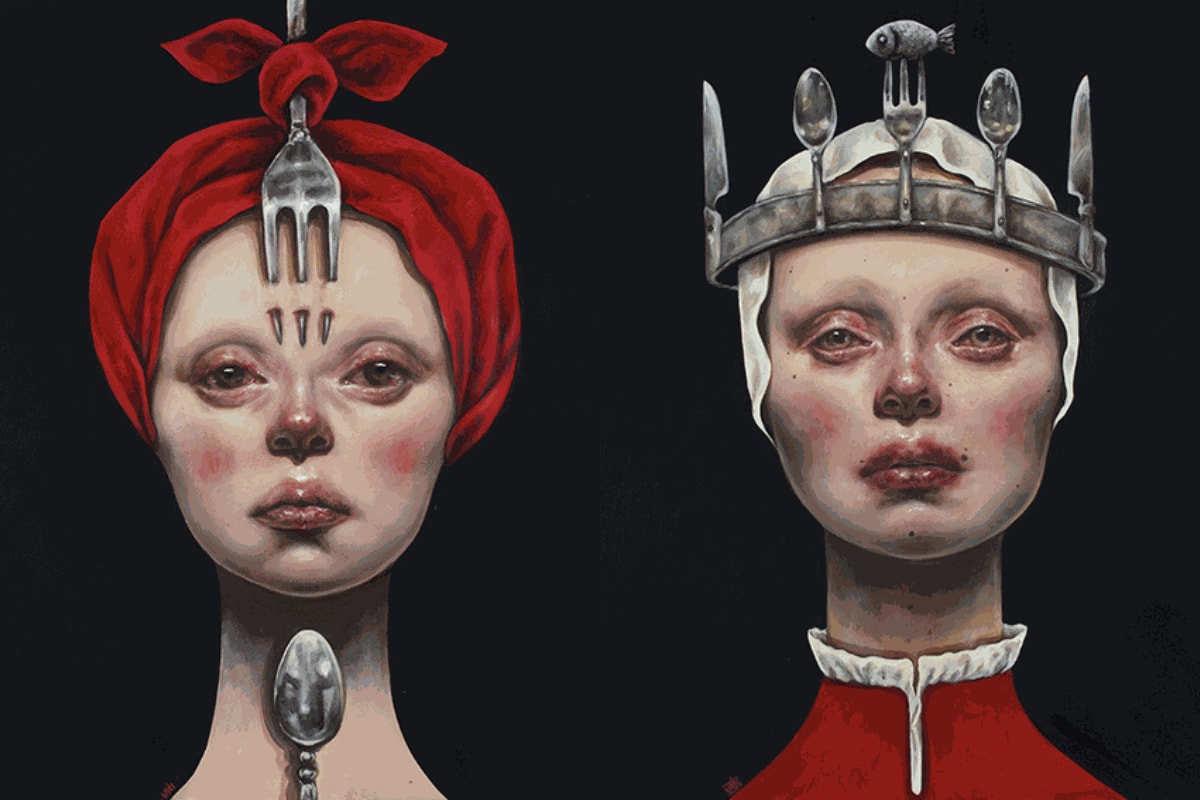
|
Chef Offer 2 & Chef Offer by Afarin Sajedi, 2014
|
Her paintings are characterized by a surreal atmosphere, strong and expressive colors, and brushwork.
Through her works, the artist reflects the complexity of the human experience and the importance of preserving cultural heritage and identity.
The artist primarily depicts women who stand against solid-colored backgrounds, often accompanied by symbolic objects or living elements like fish. These women often appear immersed in a deep sea of tranquility and pleasant silence. Yet, they are women with eloquent gazes that speak to us even with closed lips.

Madonna con Bambino by Lorenzo di Credi c.1485 - 1490
& Ecce Homo by Afarin Sajedi, 2019
Her large acrylic paintings envelop and captivate the viewer in her surreal and powerful reality.
In the face of Sajedi's works, it is impossible to remain indifferent. This is because in each of Sajedi's works, the female figure undergoes a profound examination.
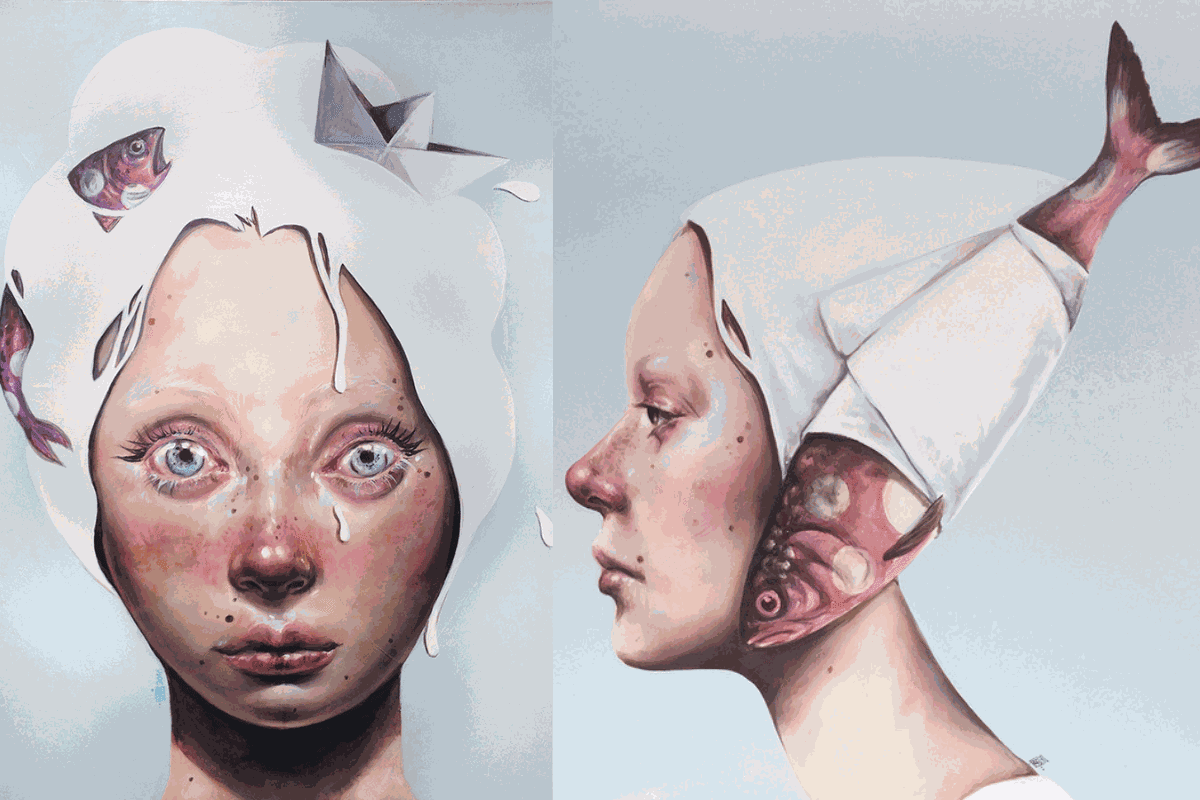
Illusion & Illusion 1 by Afarin Sajedi, 2016
What does your art mean to you?
"Realizing and depicting the universe I’m trusted with creating."
Afarin Sajedi
(Interview by Anthony Hagan)
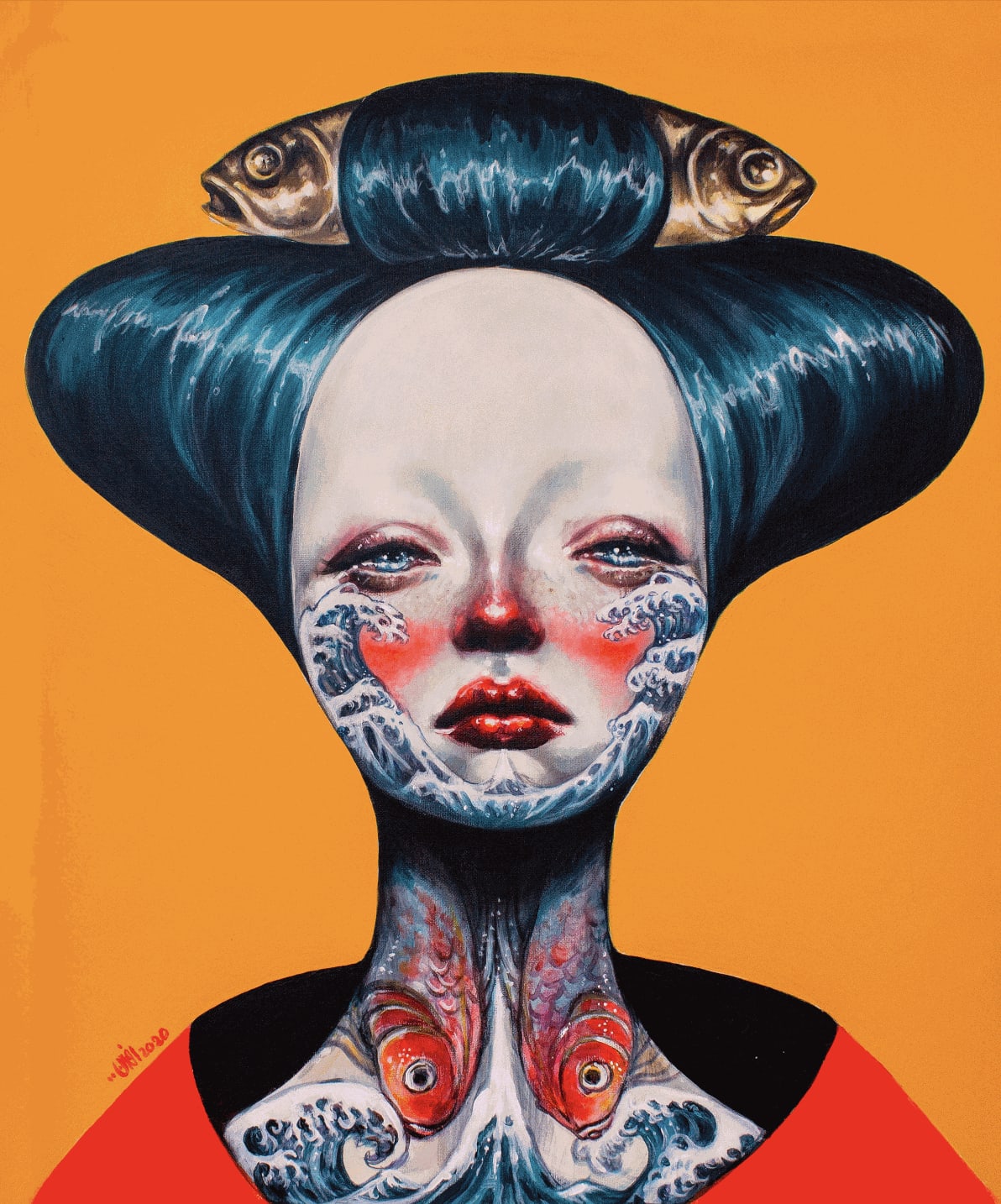
Tsunami by Afarin Sajedi, 2020
-- -- -- -- -- -- --
SAJEDI'S WOMEN: STRONG AND RESILIENT
Sajedi predominantly represents women, but not exclusively, and as she herself has stated, she does not consider herself a feminist, nor does she conceive her work as a defense of feminist ideas. What attracts her more are human and universal concerns and questions.
Nevertheless, her proximity to the theme of women and freedom is clear, and as she has mentioned, the complexity of the female mind is more in line with her ideas.
Among her most poignant works is "Tsunami" created in 2020, which depicts the bust of a woman wearing Japanese attire and hairstyles, with tears flowing from her eyes that transform into waves, reminiscent of those painted by Katsushika Hokusai. This work was created in memory of Romina Ashrafi, a 13-year-old Iranian girl who was killed by her father due to her love, which was not accepted by the family.
It's a powerful piece that also aims to represent the artist's inner self during the period when she created this painting.
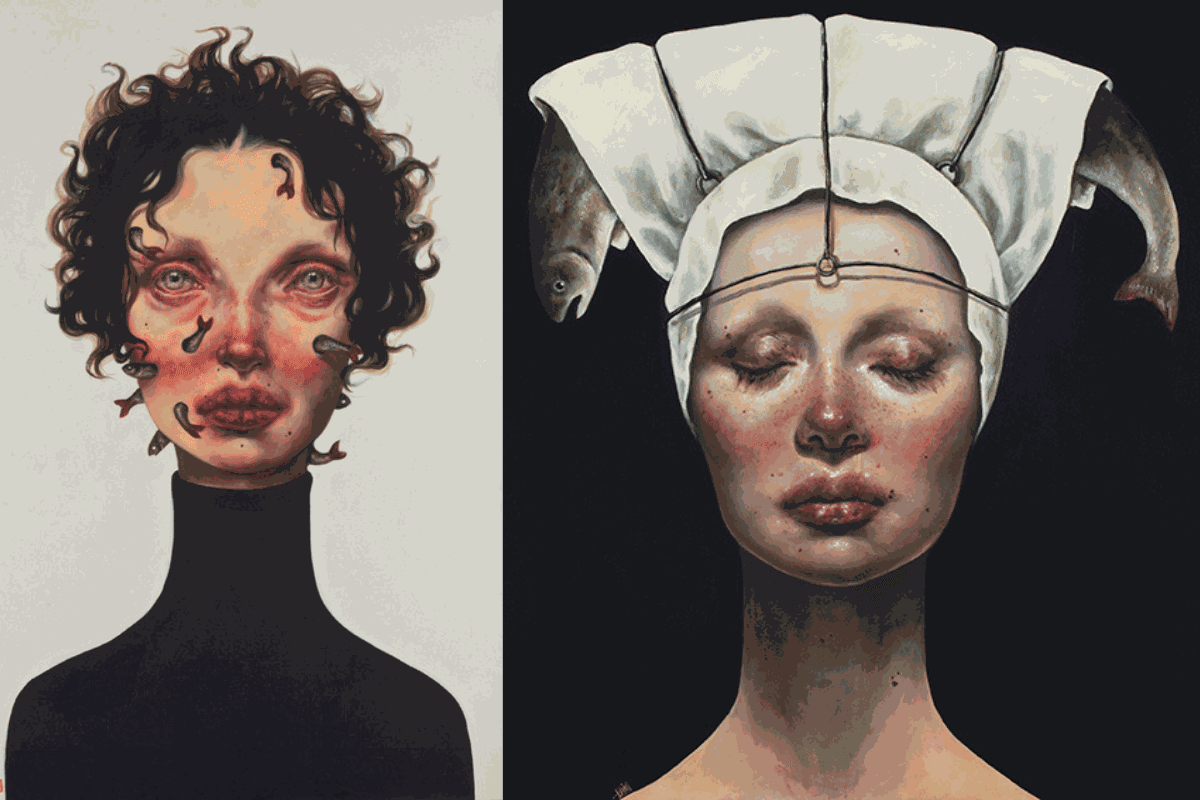
After Waves, 2012 & Chef Offer 3, 2014 by Afarin Sajedi
"Even though I prefer female subjects," she explains, "I also speak to men. I want to represent humanity. Working on the differences between men and women would be inhumane."
Afarin Sajedi
Her works often convey both irony and melancholy simultaneously. We see women with expressive, strong, and courageous faces, yet very human in their approach to life and the various emotions they feel and experience. They are bold women who understand suffering.
Their faces emerge from the canvases to speak directly to each of us, creating a silent but powerful dialogue filled with suggestions and emotions.
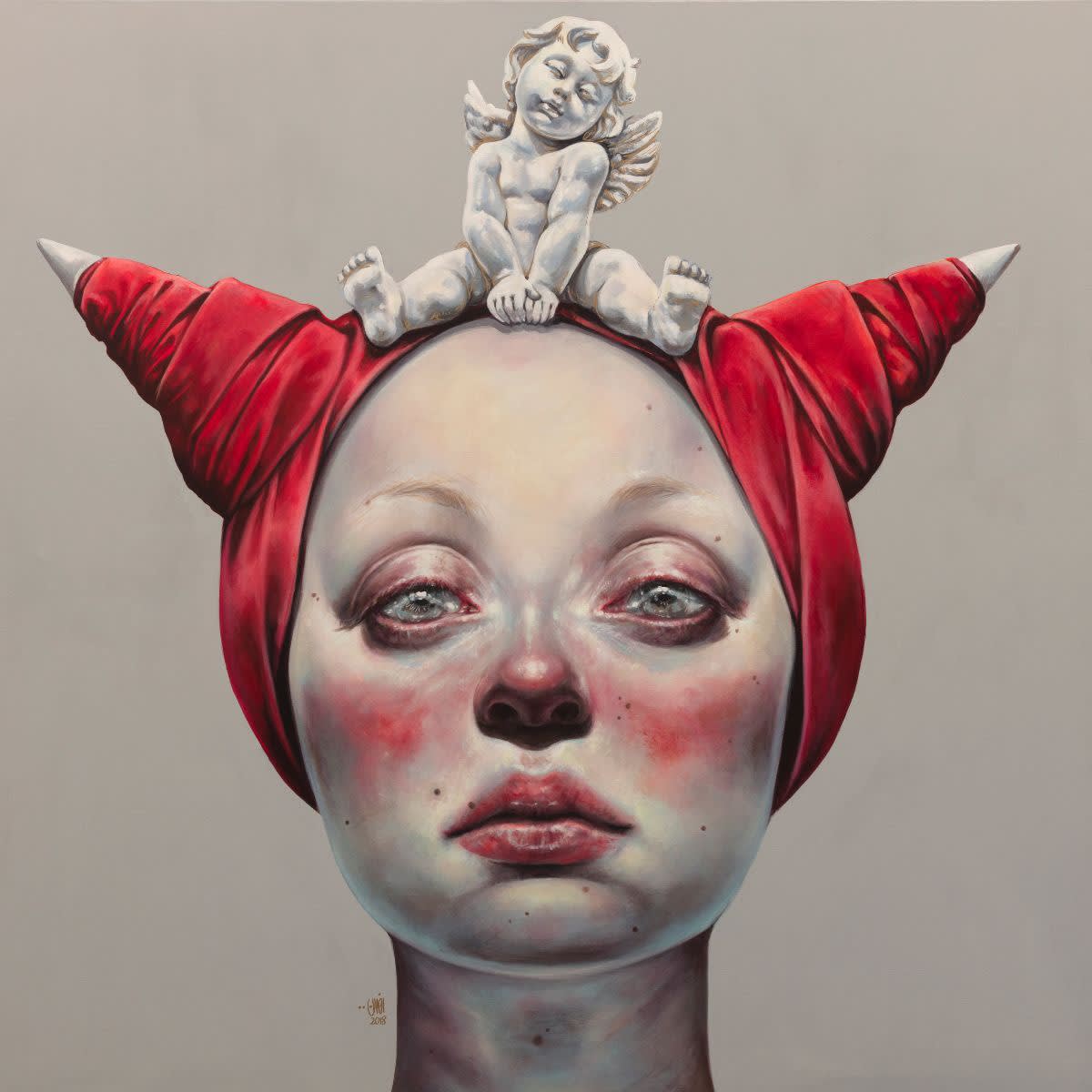
Dionysus 2 by Afarin Sajedi, 2018
To better understand her work and her conception of art, we believe that this response from Sajedi during an interview with Anthony Hagan is poignant: "the best compliments are those that are expressed by people who get feelings from my work that they can’t express. That’s when I know I have succeeded in what I want to do."
Because that's what Sajedi's art does: it leaves us speechless, taken aback by unconventional beauty, rich in meaning, and emotions that are difficult to put into words.

The Chinese Year by Afarin Sajedi, 2020
"I draw inspiration from everything, I absorb everything I see, from cinema to music. Anything that comes from art inspires me."
Afarin Sajedi
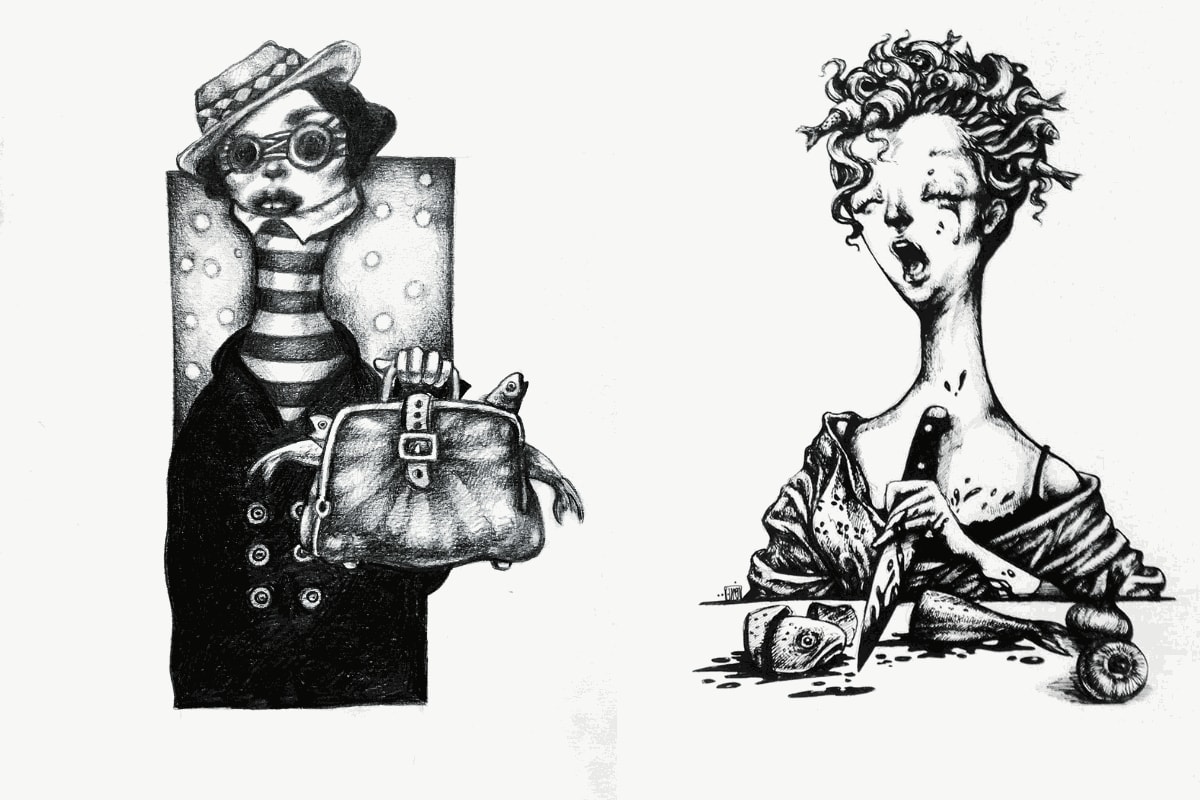
Fish Bag, & Symphony of Pain by Afarin Sajedi, 2012
Sajedi's large canvases, in a play of light and shadow, explore sequences of dreams and solitudes, narrating battles and achievements of a universal femininity. They unveil a feminine message with alchemical, religious, and literary symbolism capable of transcending all temporal and cultural barriers, offering further illumination and understanding of women today.
There are various subjects that Sajedi loves to depict, almost always female, drawing inspiration from theatrical characters and sometimes from the figure of the clown.
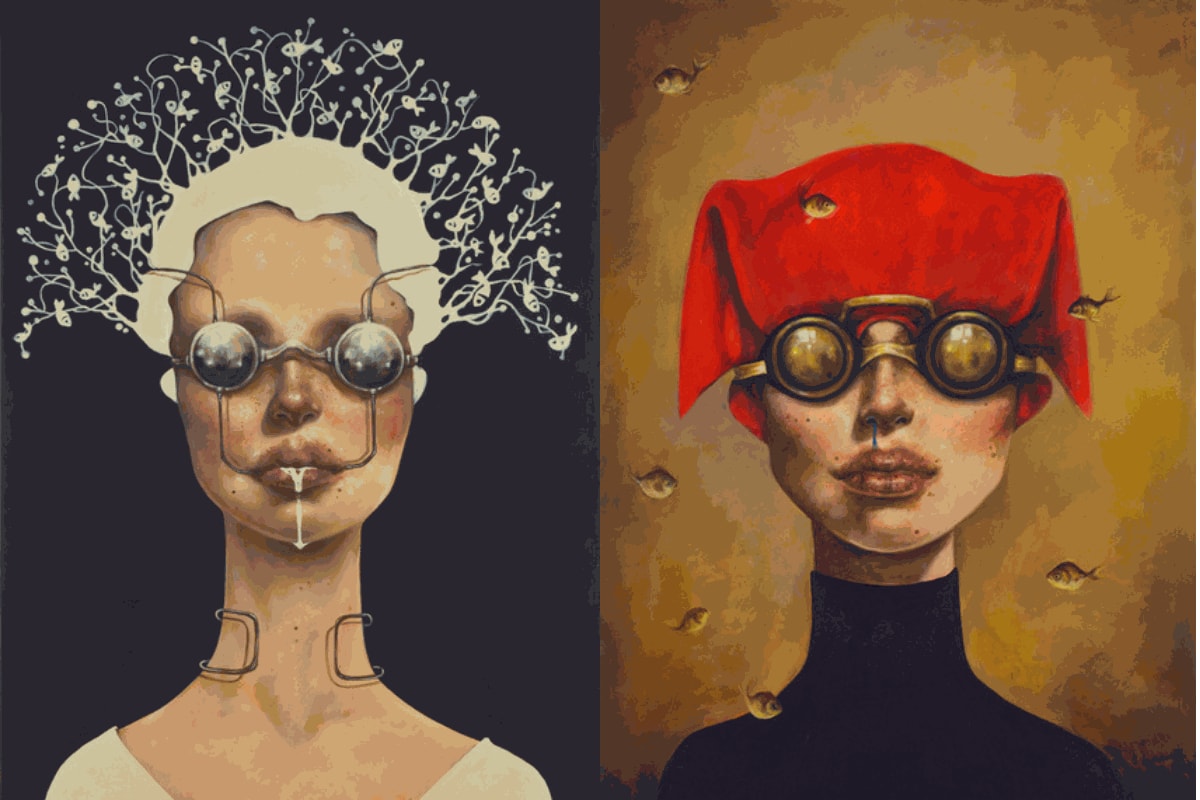
Cold Spring & Deep by Afarin Sajedi, 2012
"Illusion is a constant in our existence because illusion is that opposing part of reality that allows us to perceive our emotions as we observe something, as we think, or even right now as you and I sit on this couch talking. Even in this moment, there is illusion because life is a continuous asking of questions, of reflections."
Afarin Sajedi
Sajedi has been strongly inspired by Heinrich Böll's Clown, as can be seen in the use of makeup on the faces she paints.
In the clown makeup found in her characters, there may be a desire for mimesis, but also to transcend imposed boundaries, to communicate emotions outward to her audience, to represent what women don't say or can't say.
Not only in the figure of the clown, but perhaps also in the silence that permeates Sajedi's works, we can find Heinrich Böll. Böll, in addition to being the author of the famous "The Clown" is also the writer of the novella "Murke's Collected Silences" a work centered around silence. The protagonist, a man who works in a radio company, begins to collect the silences that are cut from radio recordings or records them himself, creating an increasingly longer tape. Through all these seemingly useless silences, he not only finds solace, something that allows him to rest but also, and above all, a way to rediscover himself.
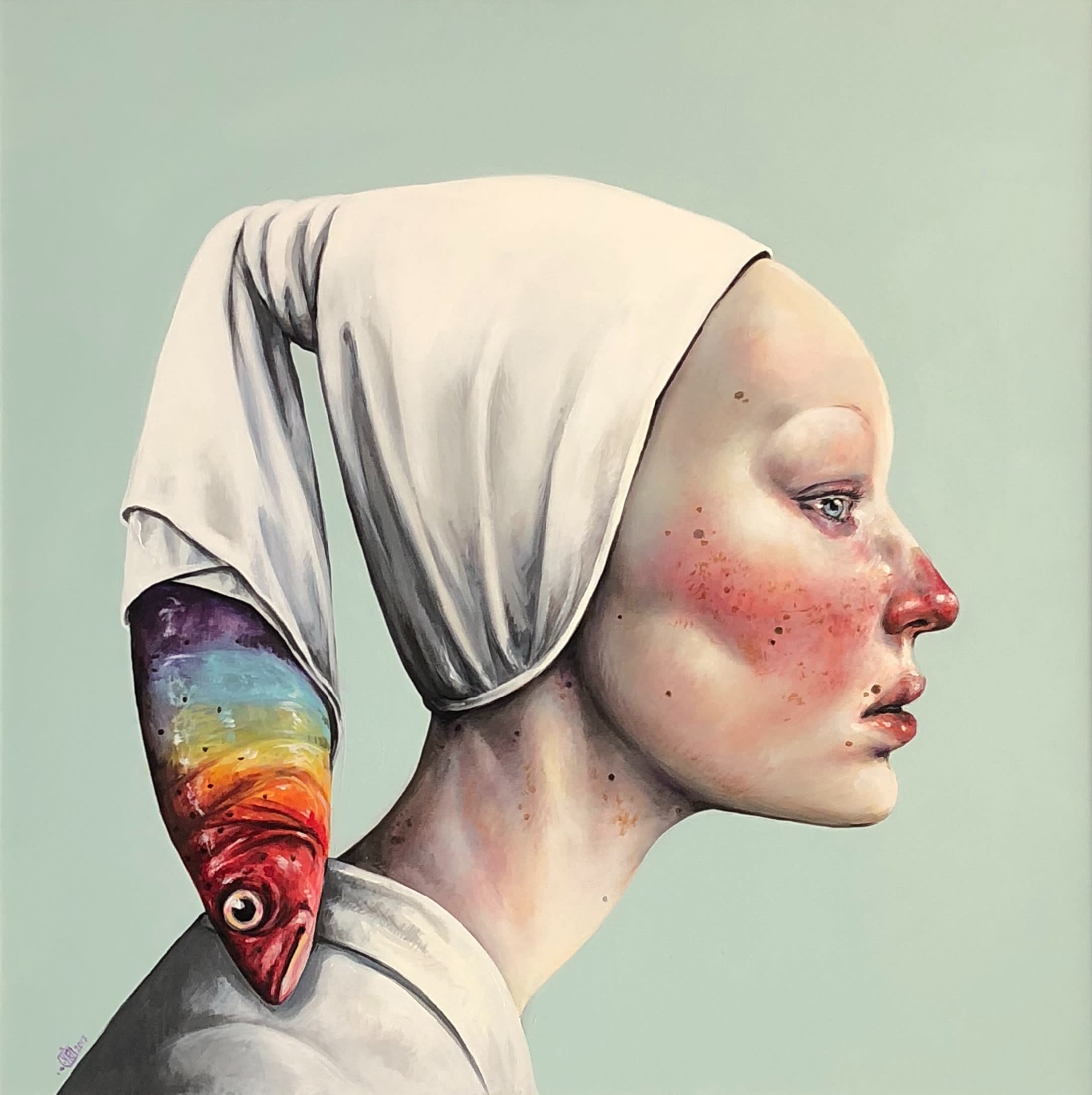
Illusion by Afarin Sajedi, 2016
“Women have often told me how much they enjoy using make up because it allows them to wear another face”
Afarin Sajedi
Sometimes her figures stand out against a black background, while at other times, the colors are cool, in shades of blue.
The black background places the figures in a theater, making these figures actresses on stage with all the attention focused on them. This renders them profoundly human.
On the other hand, the celestial blue is a color that induces a sensation of apparent calm and tranquility, though illusory. This color also allows her to emphasize the faces of the characters.
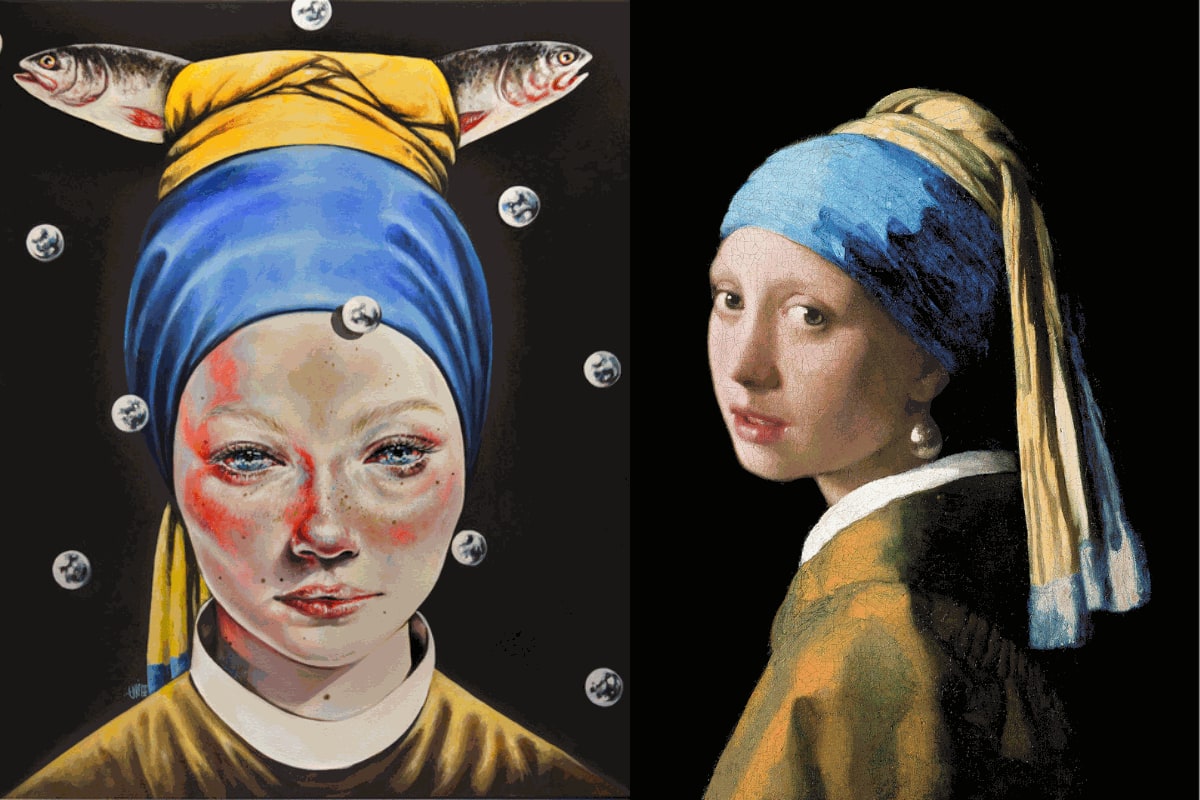
The girl with pearl earrings by Afarin Sajedi, 2019 &
Girl with a Pearl Earring by Johannes Vermeer c.1665
|
"The subjects of my paintings are proud, despite the problems related to age or living conditions."
Afarin Sajedi |
The mystical settings in which her figures emerge are unsettling. Among the objects depicted in her works, you can find unique forks, bubbles, futuristic glasses, paper boats, but above all, central to her works, is the figure of the fish.
-- -- -- -- -- --
THE FISH IN AFARIN SAJEDI'S ARTWORKS
"I find that fish represent emotions," explains the artist, "which are often elusive." Although each painting has its own particular and specific meaning, the fish in her works draws our attention as a symbolic reference alluding to the flow of emotions in the women depicted.
The symbolism of fish alludes precisely to the fluidity of emotions and the artist's desire to swim freely, without filters or censorship, in her own imagination.
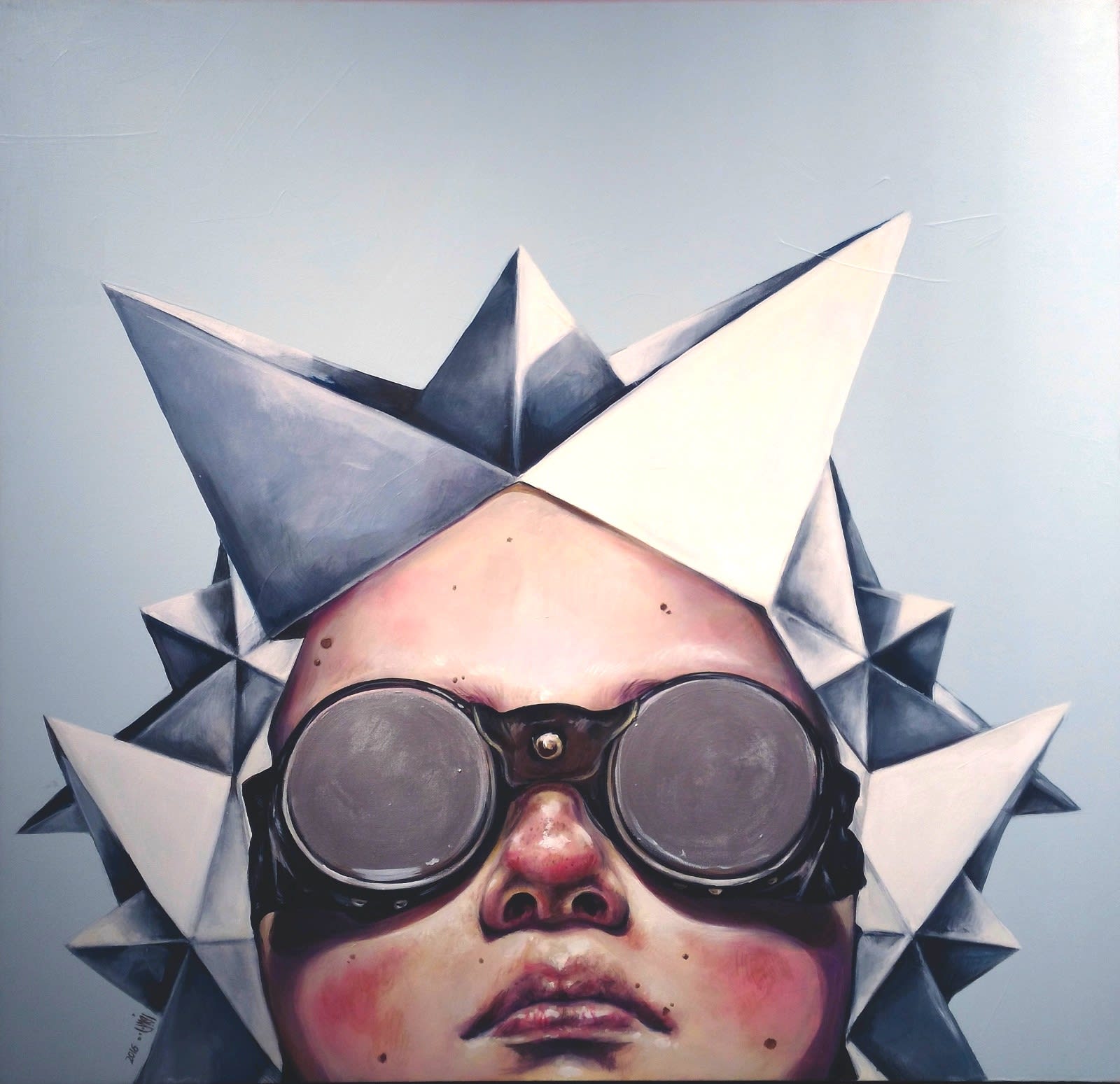
|
|
"Regarding the fish, I’ve always said that it is something invisible to others but very much present for the self. Sometimes this presence is felt so strongly that the self becomes the presence completely. "
Afarin Sajedi |
-- -- -- -- -- -- --
Sajedi's artistic production also includes many beautiful drawings created with a ballpoint pen. In these drawings, the woman emerges as a black figure against a white background, captured while performing various actions, often with her eyes covered, closed, or hidden behind large futuristic glasses.
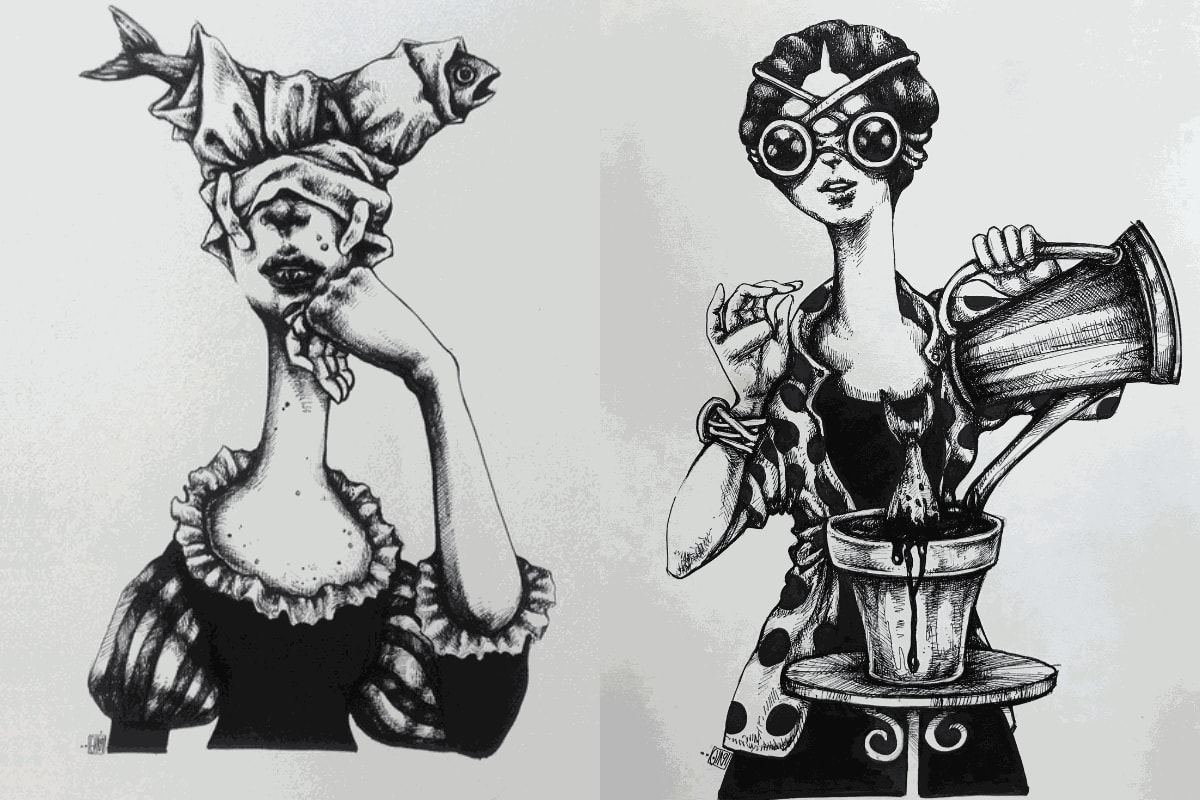
Cinderella, 2015 & A Flower Pot , 2012 by Afarin Sajedi
|
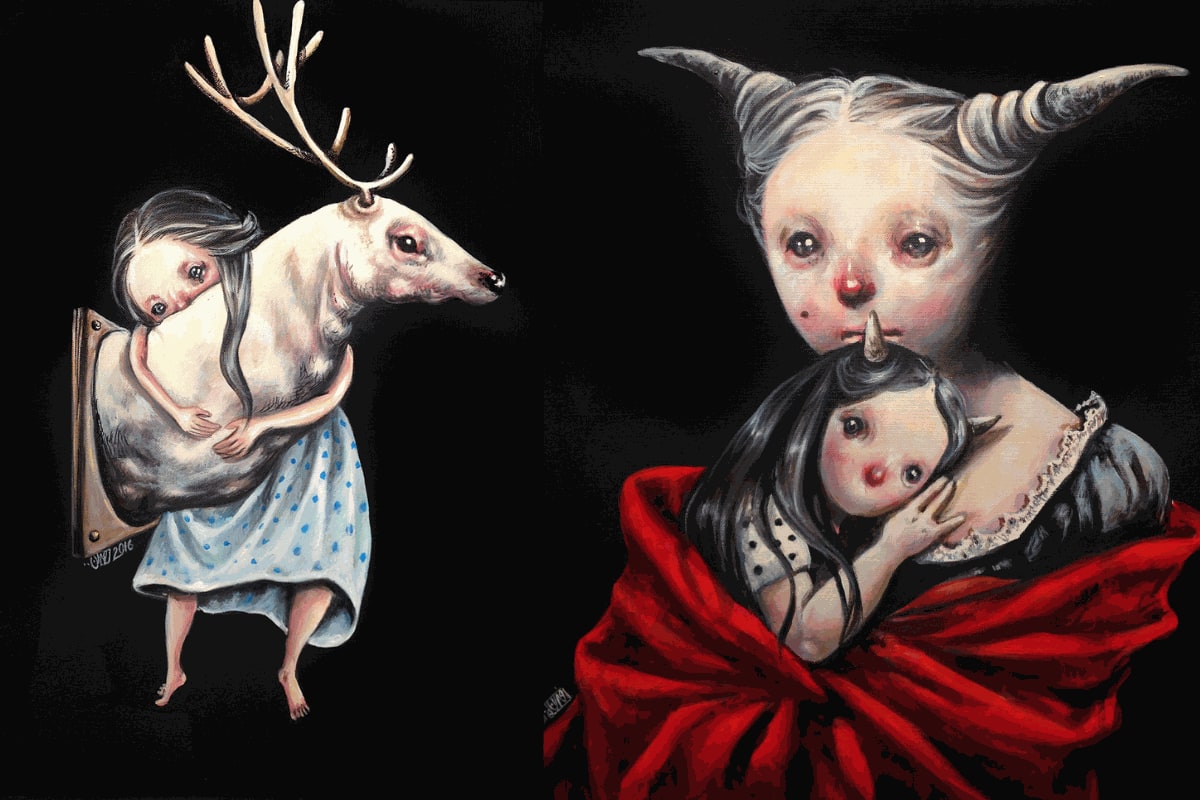
Quoting Sajedi: "Since I was a child, I was obsessed with Christian art, the one found in churches and then in grand noble palaces, with depictions of God, Christ, and the Saints."
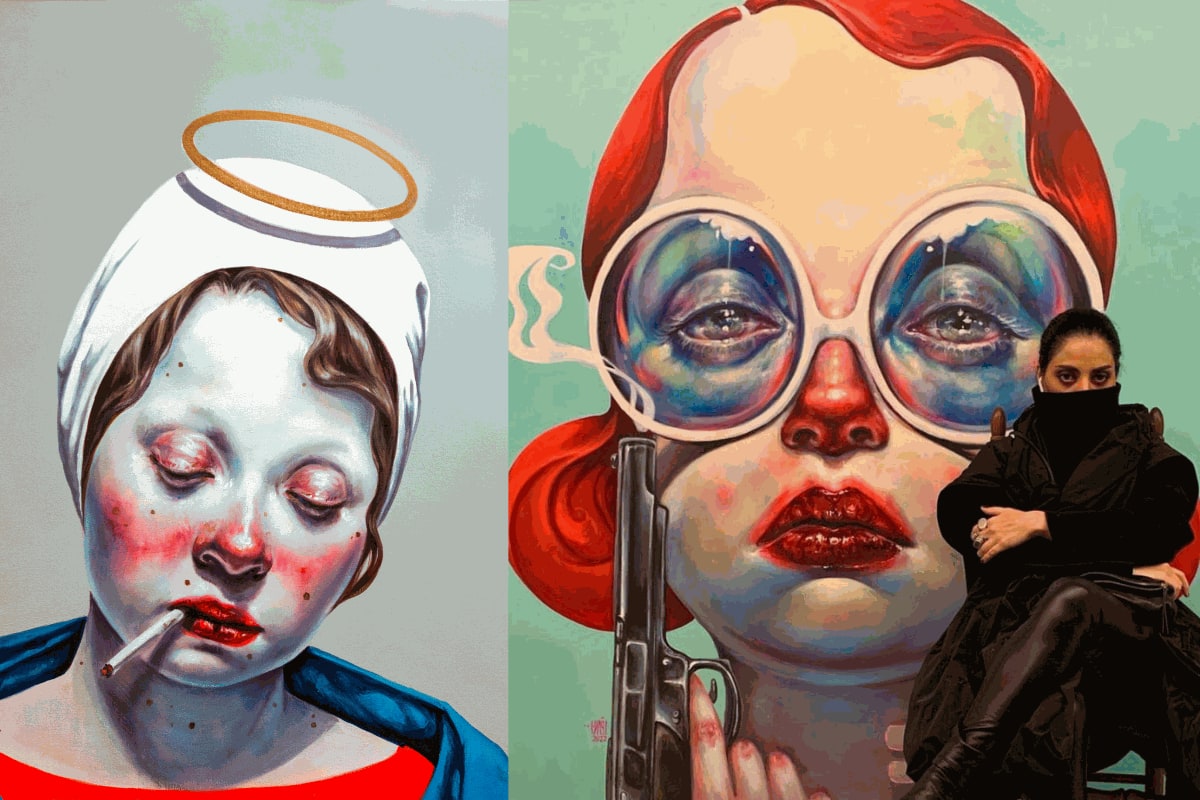
Often, the condition of women is desperate not only due to the societal constraints imposed but also because of the inner conflicts they must face. This emerges in her works and in the gazes of the protagonists of her pieces.
Her women are real, proud, simultaneously silent yet possessing deep gazes.
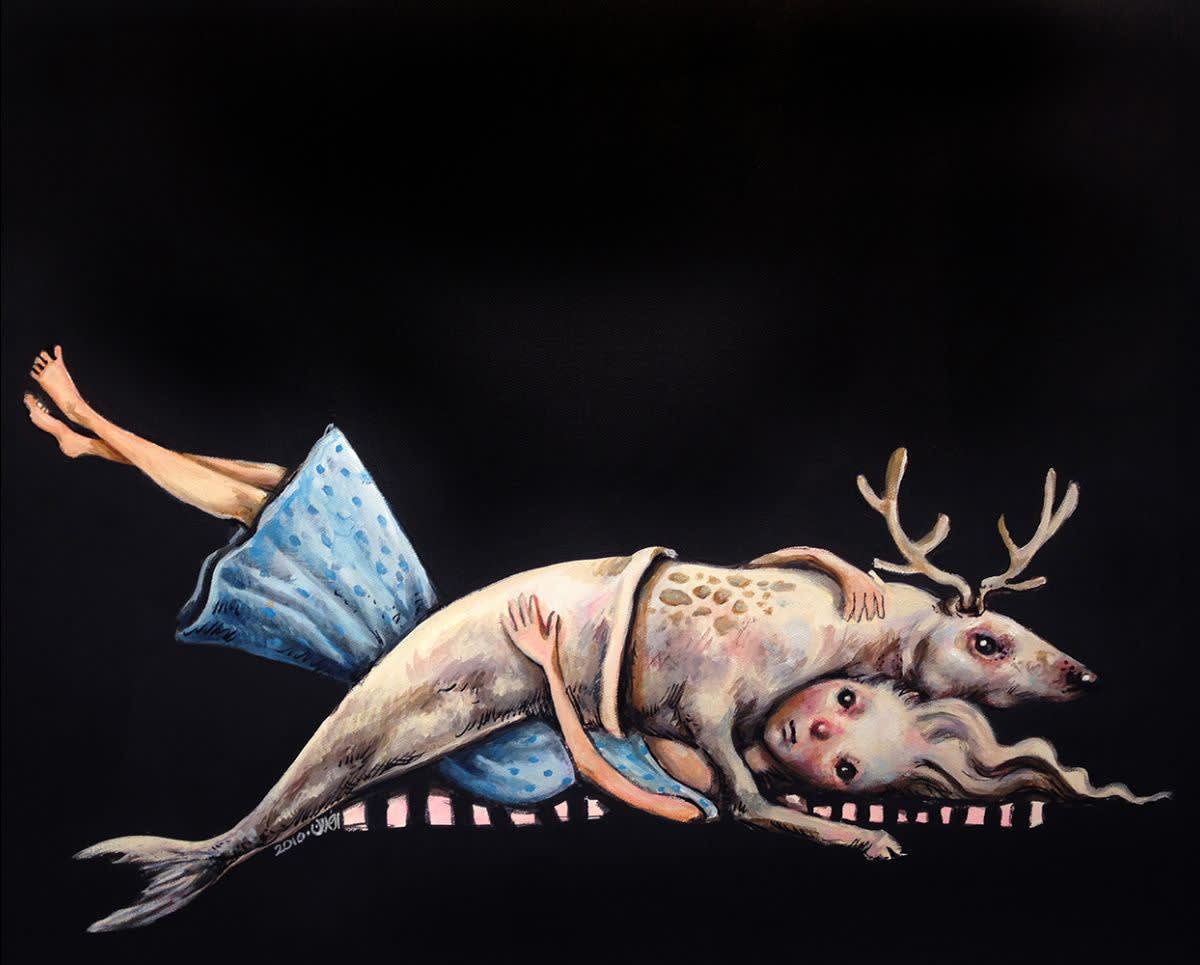
Their lips are often sealed shut, or sometimes not even painted. This expresses the impossibility of communication, which occurs entirely through their vivid and eloquent eyes, in some cases covered by glasses or headgear, or veiled, but always expressive.

Afarin Sajedi
In their gazes, we can glimpse an inner conflict made of fear and hope, but above all, great strength. Yet, often, the eyes are closed, emphasizing their ability to observe the world through an "inner sight" for which physical eyes are not needed.
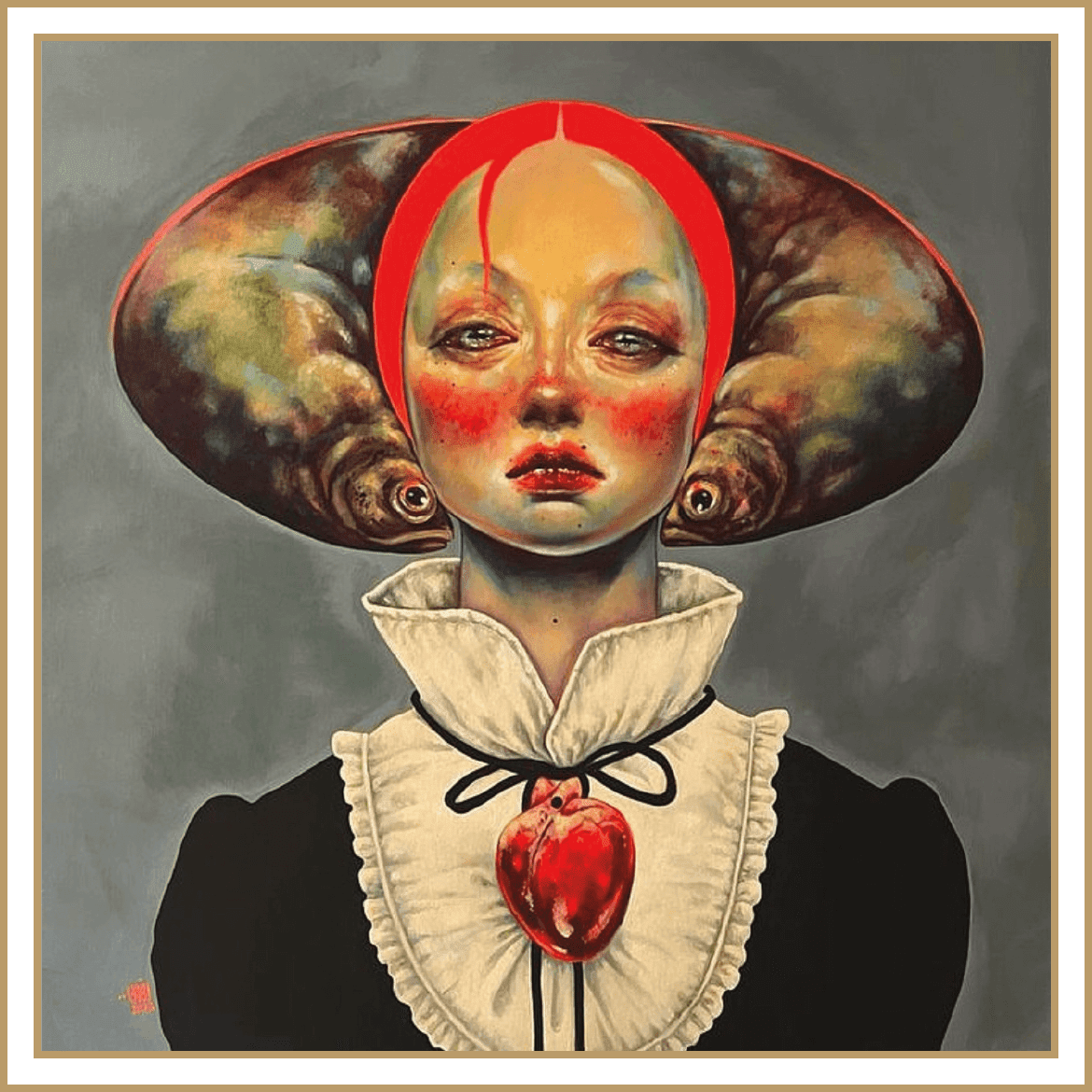
“When I paint portraits and I’m working on the details, I work in a manner very similar to close-ups in the cinema where the audience can learn about inner states and emotions of the character in that specific moment by getting closer to him/her. Generally speaking, I can’t claim to be an illustrator of the “inside”. Sometimes the inside is kept hidden by my subject’s silence, the only way to grasp it is through their gazes and the surrounding symbols; at other times, the inside is so highlighted that it strips them of all attributes of the human figure, transforming them to new creatures.”
Afarin Sajedi

